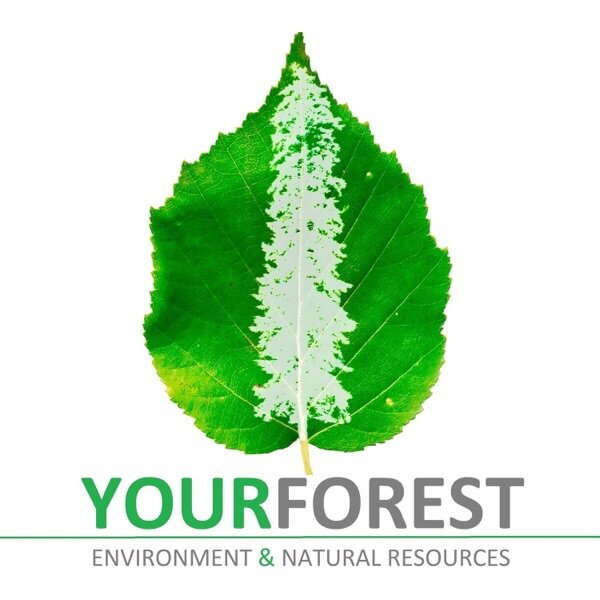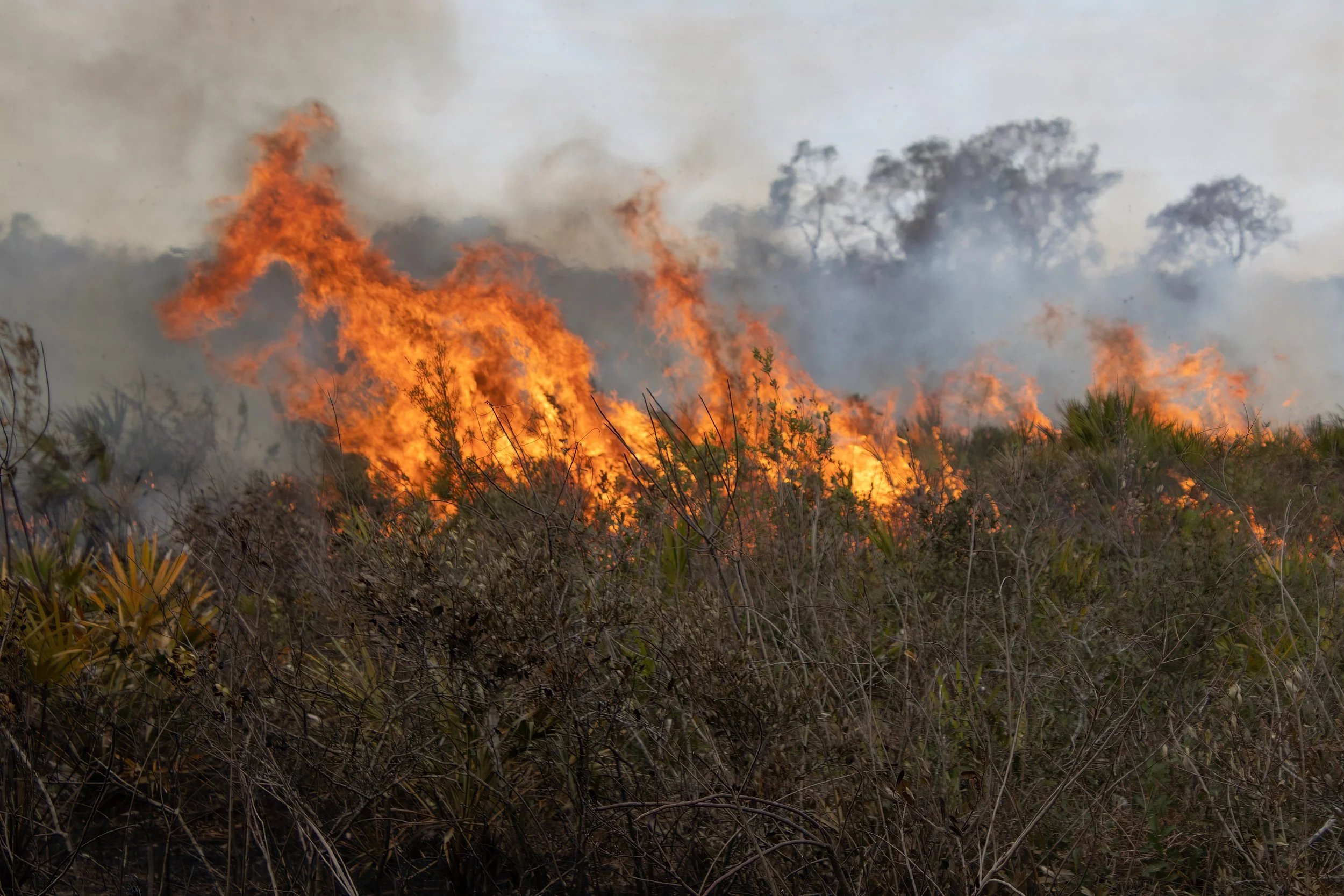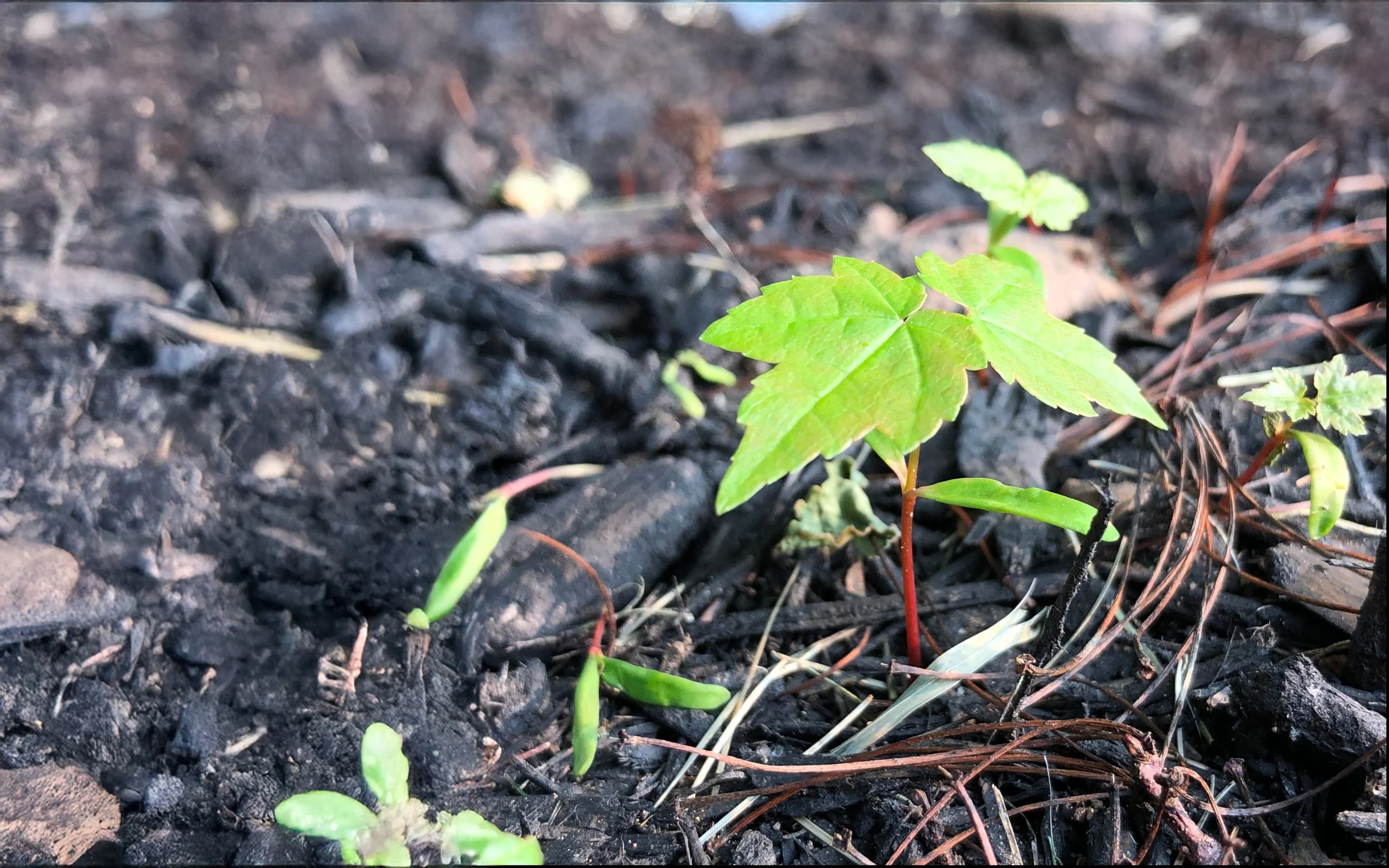ALSO YOU CAN LISTEN ON
In this episode of YourForest, Matthew Kristoff sits down with three leaders to discuss the launch and vision of the Wildfire Resilience Consortium of Canada (WRCC). This critical conversation tackles the urgent need for Canada to move past a "tipping point" in wildfire management by shifting from a siloed approach to a unified, "whole of society" effort. The episode explores the WRCC's mandate to bridge the gap between knowledge producers (like researchers and Indigenous firekeepers) and knowledge users (practitioners and policymakers) to build a more robust, context-specific, and forward-looking approach to fire resilience.
Matthew is joined by:
Shelagh Pyper, a Principal at Fuse Consulting, specializes in bridging research, policy, and knowledge to inform decision-making in fire management.
Kelsey Winter, who previously led the National Wildfire Resilience Strategy at the Canadian Interagency Forest Fire Centre (CIFFC), is a driving force behind the WRCC's establishment.
Garnet Mierau, who is instrumental in connecting knowledge and action to create a whole-of-society approach to complex challenges like wildfire.
Key Takeaways:
Re-embracing Fire: Learn why experts, including Steven Pyne, are pushing for a societal shift to re-embrace fire as a beneficial force and an essential part of life, moving beyond simply "coexisting" with it.
Connecting the Dots: Discover the core mission of the Wildfire Resilience Consortium of Canada (WRCC) to end siloed decision-making by uniting partners, values, and stakeholders in one location.
A Historic Opportunity: Understand why the current period is viewed as a nexus point in Canadian history, offering the chance to build a more robust, holistic, and resilient wildfire future.
The Final Chapter: Hear a preview of the next (and final) episode of YourForest, which will summarize and review the "large-scale lessons learned" throughout the podcast's run.
Follow the guest on:
Sponsors
Notable Quotes:
[00:09:16] Shelagh Pyper: "I'm one of the principals at fuse, and that's what our specialty is, just bridging knowledge, producers with knowledge users and research practitioners, communities, also working with Indigenous communities and Indigenous knowledge and trying to connect those dots."
[00:26:30] Shelagh Pyper: "We will not define resilience for everyone in this vast country because we understand that it will mean different things in different contexts, in different time horizons across agencies in different ways of knowing and doing."
[00:20:11] Kelsey Winter: "Now the wildfire situation is to a point that we're past the tipping point, and if we don't do something different, we'll just keep having the second worst, the first worst season over and over again. So I think the time is now."
[00:28:30] Kelsey Winter: "I get this teeth-grinding moment when we talk about building back better. We don't want to build back; we want to build forward. And I think that's resilience."
[00:13:44] Garnet Mierau: "I know, and I believe in this work that it can be done and that connection of the knowledge from the academic side or whether it's an Indigenous fire keeper to that practitioner, that policymaker, that individual on the ground, I know that there's a strong need to make those connections."
[01:07:14] Garnet Mierau: "fires, medicine for the land is what I've heard elders say to me. So good fire and having that conversation with society and getting people to think of it in a different context and really use it."
Takeaways with Timestamps:
[00:00:05] Embracing Fire as Part of Living: The discussion opens with a philosophical statement from Steven Pine, urging a societal shift to go beyond coexisting with fire, instead leaning toward accepting and embracing it as a beneficial force and an integrated part of life.
[00:00:55] Podcast Introduction and Host's New Role with the WRCC: The host, Matthew Christophe, introduces the second-last episode of his podcast and reveals his new professional role with the Wildfire Resilience Consortium of Canada (WRCC), the entity at the center of the conversation.
[00:02:49] Introduction of Speakers: Roles and Expertise in Fire Resilience: The three guests - Shelagh Pyper, Kelsey Winter, and Garnet Mierau - are formally introduced, outlining their respective backgrounds, which span knowledge mobilization, policy, and research in fire management.
[00:05:39] The Genesis of the WRCC: Addressing Silos in Wildfire Management: The speakers explain their motivation for establishing the WRCC, highlighting the inefficiencies and widespread recreation of work caused by "silos" across the country, necessitating a unified network.
[00:16:59] The WRCC as a Network Connector, Not a Singular Centre of Excellence: The structure of the Consortium is clarified; it functions as a decentralized, collaborative network designed to bridge and connect various stakeholders, rather than acting as a centralized, controlling body.
[00:19:39] Past the Tipping Point: Why the WRCC is Critical Now: An urgent discussion on the current state of wildfires, with the panelists asserting that Canada has passed a critical threshold and must fundamentally change its approach to avoid repeated, catastrophic fire seasons.
[00:22:41] Wildfire as a "Whole of Society" Complex Onion: The focus shifts to the extensive societal impact of wildfires, emphasizing that the crisis is too complex to be handled by fire agencies alone and requires a comprehensive "whole of society" approach to address its layered challenges.
[00:25:50] Defining and Co-Designing Wildfire Resilience in a Vast Country: The speakers commit to a non-prescriptive, inclusive definition of resilience, ensuring it is co-designed, context-specific, and respects diverse ways of knowing and doing across Canada’s varied landscapes and communities.
[00:31:24] Setting Strategic Priorities: The Three Pillars of Wildfire Management: The WRCC's initial strategic plan is discussed, structured around the three essential phases of wildfire management: Prevention/Mitigation, Preparedness/Response, and Recovery/Adaptation.
[00:41:36] Building Trust and Fostering Authentic Collaboration at Scale: The foundational need for genuine trust and authentic relationships is emphasized as the prerequisite for effective, large-scale collaboration between government, Indigenous communities, practitioners, and researchers.
[01:13:24] Colonialism and Fire Exclusion as the Core Systemic Problem: The discussion evolves into a deeper critique of the historical and systemic factors, particularly colonial impacts and past fire exclusion policies, that have created the current crisis, advocating for fundamental, transformational change.
[01:24:44] The Need for Action: "Good Today is Better Than Perfect Someday": A final call to action is made, urging stakeholders to implement current solutions and adjust as needed, noting that waiting for perfect data or complete funding will cause the wildfire crisis to outrun their efforts.
ARTICLE
Why Is Wildfire Resilience in Canada More Urgent Than Ever
Wildfires are no longer rare in Canada. They’re bigger, faster, and harder to control than ever before. Every summer, smoke fills the air, homes are evacuated, and forests that once felt endless are left in ashes. What was once seen as a seasonal challenge has become a national concern.
These fires aren’t just burning trees; they’re changing lives, displacing families, and testing the resilience of our communities. The message is clear: fighting fires after they start isn’t enough anymore. It’s time to focus on prevention, preparation, and resilience.
At the heart of this effort is Garnet Miro, Executive Director of the Wildfire Resilience Consortium of Canada (WRCC). A registered professional forester with years of experience in wildfire management, Garnet has led evacuation operations, coordinated response teams, and assisted communities in their recovery.
His work across British Columbia and Alberta demonstrated to him the importance of bringing science, policy, and people together to address a changing fire reality. Through the WRCC, he’s helping connect governments, Indigenous organisations, researchers, and local communities to build real, long-term resilience.
In this article, we’ll explore what wildfire resilience in Canada truly means and why it’s urgently needed. We’ll look at how collaboration, Indigenous fire stewardship, and shared knowledge are shaping a safer and more balanced future for people and the land they call home.
Why Wildfire Resilience in Canada Is Urgently Needed
Wildfires in Canada are getting worse. They’re bigger, hotter, and harder to control every year. That’s why the Wildfire Resilience Consortium of Canada (WRCC) was created.
It’s not just another agency. It’s a space where people from diverse sectors come together to share their knowledge and take tangible action.
A Network That Connects Everyone
The WRCC isn’t one single office or department. It’s a group that connects governments, scientists, Indigenous leaders, industries, and local communities. Each group brings its own knowledge and experience.
When they share information instead of working alone, it saves time and prevents the same work from being repeated. The goal is straightforward: to make wildfire management smarter and faster through collaboration.
Why It Matters Now
Canada has seen three of its worst fire seasons in just five years. The situation has reached a tipping point. Fighting fires as they come isn’t enough anymore. The WRCC focuses on building resilience, which means preparing for fire before it happens and learning to live with it.
What’s Making Fires Worse
It’s easy to blame climate change, and yes, it’s a big factor. But there’s more to it:
Fire crews face longer and tougher seasons.
Communities keep growing in fire-prone areas.
People have less time to handle prevention work.
Countries that once helped now struggle with their own fires.
Fires bring health problems, stress, and economic loss.
Working Together for a Safer Future
The WRCC is about connection and trust. It links science with real-world action. It helps communities, governments, and researchers work toward a common goal: living safely with fire.
By working together, Canada can transition from a reactive to a resilient approach and build a prepared future, not just a hopeful one.
Understanding What Wildfire Resilience in Canada Really Means
Wildfire resilience isn’t about stopping every fire. It’s about learning to live with it safely. Canada’s wildfire situation is constantly evolving, so resilience now means planning ahead, working together, and adapting rather than just reacting.
Photo by Pixabay on Pexels
A Practical Way to Define Resilience
Resilience means preparing for wildfires before they start. It’s about building smarter, choosing safer locations, and designing systems that can recover faster.
The goal isn’t to rebuild what burned but to build forward. Fires will continue to occur, so we must learn and improve each time.
Resilience also has different meanings in different contexts. What works in British Columbia may not be suitable for the Prairies or the North. Each community needs its own plan that fits local conditions, knowledge, and culture.
How Canada Is Putting This Into Practice
The Wildfire Resilience Consortium of Canada (WRCC) focuses on three main areas:
Knowledge Sharing: Bringing researchers, local leaders, and communities together to share what works.
Technology and Innovation: Finding and testing new tools that help predict, prevent, and manage fires.
Indigenous Fire Stewardship: Respecting and restoring Indigenous fire knowledge that has shaped healthy landscapes for centuries.
The WRCC doesn’t control decisions. It helps people connect, align efforts, and move in the same direction.
The Human Side of Resilience
Resilience depends on trust. People need to feel heard, respected, and included. That means asking what communities need, listening carefully, and taking action accordingly.
It also means facing hard truths about past mistakes and learning from them. True resilience isn’t built in meetings or reports.
It grows through relationships, shared effort, and open conversation. Canada can’t eliminate fires from its forests, but it can build a future where people, communities, and nature coexist safely with them.
How Collaboration Shapes the Future of Wildfire Resilience in Canada
Open and honest collaboration is at the heart of wildfire resilience. It’s not about fancy meetings or long reports. It’s about creating spaces where people feel safe to speak, listen, and share real concerns.
Making Space for Every Voice
In group discussions, a few people often dominate the conversation while others remain quiet. That silence hides valuable ideas and lived experiences.
To address this, wildfire meetings should provide everyone with a fair opportunity to participate. Some people are comfortable speaking up in large groups.
Others prefer smaller discussions or written feedback. What matters is giving everyone a voice and making sure every view counts. Progress comes when people feel heard and respected.
Turning Conflict into Productive Discussion
Conflict isn’t a bad thing. It usually means people care. When managed well, disagreement sparks better ideas and solutions. To keep it healthy, every discussion should follow a few ground rules:
Everyone deserves to be heard and understood.
Different opinions should be explored, not ignored.
The aim is to achieve a shared understanding, not to win an argument.
When people focus on finding solutions instead of defending sides, tension becomes progress.
Creating a Culture of Trust and Respect
Real collaboration depends on trust. That trust grows from steady communication and honest listening. People need to know that they can speak freely without fear of judgment. It also helps to give participants the freedom to join when they’re ready. Flexibility builds comfort, and comfort builds trust.
The Core Principles That Hold It Together
Strong collaboration is built on three simple yet essential elements: trust, effective communication, and humility.
Trust makes teamwork reliable.
Communication keeps information clear and open.
Humility reminds everyone that no one knows it all.
When these three work together, collaboration feels natural and leads to lasting results.
Redefining Relationship with Fire through Wildfire Resilience in Canada
Canada is learning to live with fire instead of fearing it. Wildfire resilience isn’t just about putting out flames anymore. It’s about understanding how fire shapes the land, why it’s needed, and how to live safely beside it.
Photo by Soly Moses on Pexels
Building a Healthier Fire Culture
For decades, the idea was simple: fire is bad. But controlled and cultural burning show the opposite. Managed fires reduce fuel buildup, keep forests healthy, and protect nearby towns.
To build this new mindset, three things matter most:
Public Awareness: People need to see fire as part of nature’s cycle, not just a disaster. When we understand its purpose, fear gives way to respect.
Community Involvement: Local fire-smart programs teach prevention, preparation, and recovery. When communities come together, they create genuine safety and confidence.
Education and Communication: Schools, local workshops, and digital media can reshape how Canadians see fire. Simple, clear communication keeps everyone informed and ready.
Technology and social platforms now help spread these lessons quickly. The Wildfire Resilience Consortium of Canada (WRCC) plays a big role here. It connects governments, Indigenous leaders, and the public, enabling everyone to learn and act together.
Strengthening Indigenous Leadership
Indigenous communities have always known how to work with fire. Their cultural burns protect the land, heal ecosystems, and reduce wildfire risks.
The WRCC doesn’t lead this; it supports and amplifies Indigenous fire stewardship. It provides resources, shares knowledge, and ensures Indigenous voices guide national wildfire efforts.
A Shared Path Forward
This change takes humility and patience. It’s about replacing fear with understanding and control with cooperation.
Fire isn’t only a threat; it’s a natural force that renews and protects the land. Canada’s goal is now simple: to build a future where people and fire coexist in balance.
Conclusion
Canada’s future depends on how well we learn to live with fire. Fighting every blaze isn’t realistic anymore, and ignoring the problem won’t make it go away. We need to prepare smarter, act faster, and work together.
That’s what wildfire resilience in Canada is really about. It’s not just about saving forests. It’s about protecting people, homes, and the land we all depend on.
The WRCC brings everyone to the same table, including scientists, Indigenous firekeepers, local leaders, and governments.
Each group brings different knowledge, and that mix is what makes progress possible. When people share ideas instead of working alone, change occurs more quickly. And when decisions come from trust, not fear, they actually last.
We can’t erase wildfire from our lives, but we can change our relationship with it. Fire can heal the land, renew forests, and teach us how to plan more effectively. If we continue to listen, learn, and act together, Canada can build a future that’s ready for what’s ahead.
Wildfire resilience begins with small steps, open communication, learning from experience, and supporting those who do the hard work. The path won’t always be easy, but it’s worth it. Canada’s forests, communities, and future generations depend on it.
FAQs
What role does climate change play in Wildfire Resilience in Canada?
Climate change increases the frequency and intensity of fires. Rising temperatures and longer dry periods create perfect fire conditions. Building resilience means adapting our systems, planning more effectively, and mitigating risks before they escalate.
How can everyday Canadians support Wildfire Resilience in Canada?
People can clear dry leaves, prepare emergency plans, and stay informed about local fire regulations. Joining community programs like FireSmart also helps protect homes and neighborhoods.
How does Indigenous knowledge strengthen Wildfire Resilience in Canada?
Indigenous communities have used fire to care for the land for generations. Their traditional burning practices reduce fuel buildup and restore ecosystems.
What’s the biggest challenge in building Wildfire Resilience in Canada?
The hardest part is coordination. Many groups work separately, so WRCC focuses on connecting them to act together.
How can technology improve Wildfire Resilience in Canada?
New tools help predict where fires might start and how they spread. Drones, sensors, and satellite data enable faster and smarter responses.






